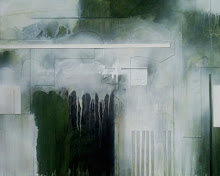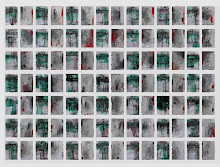
February 25, 2009
February 12, 2009
February 10, 2009
February 9, 2009
Essay from "Under the Influence" Exhibition Book

Longview Museum of Fine Arts - Longview, TX - Spring 2009
Co-sponsored by The International Museum of Collage and Assemblage - Ft. Worth, TX
(First Edition available online at collagemuseum.com).
The Redemption of Rubbish
by Gary A. Bibb
Utilizing found-object materials in the construction of Fine Art has long been regarded as visually and metaphorically viable. For nearly a century, artists have collected non-art objects with the intent of incorporating them within their compositions. The results have repeatedly proven that the creative process of selection, signification and organization can elevate even the most humble scraps of human detritus into beautiful, majestic forms.
Joseph Stella (1877 – 1946, Italian/American) is widely recognized as a Futurist and a Symbolic Narrative painter; however, beginning in 1918 he conceived an intimate, personal language through the use of found-object materials. His collages became an expression of deeply felt, private sensibilities. They were rarely exhibited during his lifetime and have just recently come to light as profoundly significant.
Stella’s collages are simple presentations of weather-worn wrappers and paper debris organized into minimal compositions. Within a majority of the pieces he is not attempting to define form and space by employing the popular cubistic manner of design; but rather, he arranges the found materials so as to define the fundamental aesthetics of the objects themselves. Emphasis is on the visual impact of the actual materials and the dynamics of their juxtaposition. In so doing, Stella reveals the intrinsic beauty of the fabricated objects along with an inherent tragedy of rejection and de-humanization. He was at the vanguard of exploring these aesthetic sensibilities by using discarded found-objects to convey the effects of modernity and the mechanized age on the human condition. This is perhaps Joseph Stella’s greatest contribution to our artistic heritage.
The influence of Stella’s collages on my art began in the late 1970’s. After graduating from college in 1975, I embarked on a journey of self-examination and artistic exploration with the intent of developing a personal visual style. While foraging back-alleys and industrial sites for unusual pieces of paper, I discovered an affinity for the found-objects most commonly regarded as trash. My aesthetic foundation was solidifying during this period and I began identifying with the weathered materials. There was something significant, authentic and genuine about the discarded rubbish. Although rejected and deemed valueless, it appeared the found-objects were attempting to resist the ravages of time and maintain a sense of dignity. A metaphor was forming. These scraps of paper, cardboard, wood and metal were beginning to symbolize the concept of intrinsic value and the noble character of perseverance. I came to realize that through artistic intervention, discarded items could be transformed into expressions of renewed purpose, hope and beauty.
During the ensuing years, I constructed many collages using found-objects to explore this metaphoric concept. Then, in late 1978 or 1979, I discovered a magazine which featured a Joseph Stella collage. This piece of art was composed of worn, stained paper; and it seemed very familiar. The similarity to some of my own work was uncanny – however, his collage had been constructed nearly 50 years prior to mine. I was encouraged by the discovery because it confirmed and supported my own art. Independently, I had devised a similar use of materials and developed a visual language capable of articulating profound ideals.
The utilization of found-objects to express an aesthetic ideology remains integral to my artistic intent. Incorporating collected items, along with various media and techniques, expands my visual vocabulary and adds an objective dimension to my art. Therefore, the ideas expressed are not merely limited to the realm of ethereal thought but also enter into the viewer’s tangible reality.
Subscribe to:
Comments (Atom)





















































